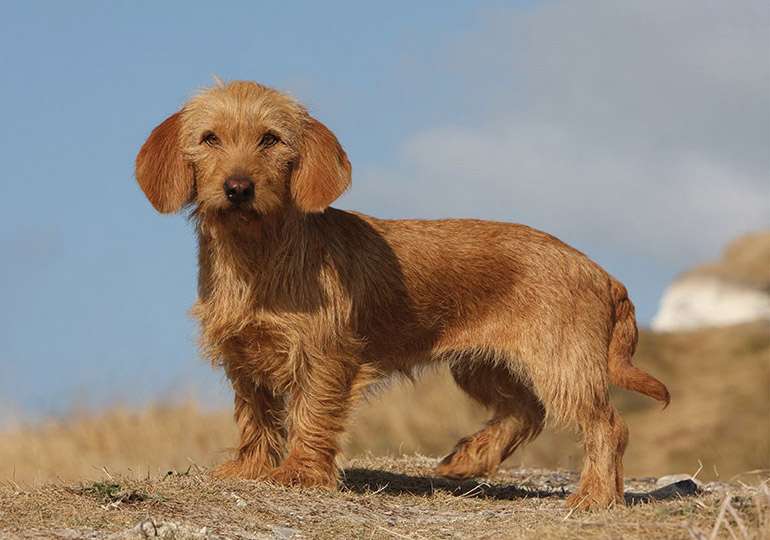
Description
Scottish terriers are a little terrier dog breed that have more fur around their legs and lower bodies and a medium-length wiry coat with a distinctive beard. Although the coat is normally black, it also occurs in wheaten and brindle patterns. Scotties make effective vermin exterminators because of their strong constitution and small legs.
Origin/History
Terriers have long served as working farm and hunting dogs in the Scottish Highlands. These dogs came in a variety of shapes and sizes, and they were occasionally referred to as Skye terriers in honour of the Scottish Isle of Skye, where many of them resided. The Scottish terrier is thought to be the oldest of these Highland terriers, however its exact origins are unknown.
In the late 1800s, breeders tried to standardize the several varieties of Scottish terriers. This gave rise to the Skye terrier, West Highland white terrier, and cairn terrier in addition to the Scottie.
Scotties came to the country for the first time in 1883, and the AKC officially recognized the breed in 1885. The 1930s and 1940s saw the height of its appeal. Scotties have been owned by a number of famous people, including Bette Davis, Humphrey Bogart, and President Franklin D. Roosevelt. Additionally, the breed has the distinction of being made into a Monopoly game piece.
Temperament
The demeanor of Scottish terriers is often active and lively. They are normally devoted to their family, although they are wary of strangers and other potential threats. This breed’s robust nature, which is sometimes difficult and independent when it comes to training, is shaped in part by its high intelligence.

Care
Scotties require enough mental stimulation in addition to a reasonable amount of regular activity. Additionally, they need more than simply routine training and socialization as well as basic grooming.
Exercise
Scotties should still get at least an hour of exercise every day despite the breed’s diminutive stature. To assist them burn off energy, take them for walks in the morning and evening and during the breaks. Additionally, dog sports and puzzle toys might aid to mentally challenge them.
It’s preferable to have a securely enclosed yard where these dogs may walk about freely because they also enjoy running and chasing toys (though they don’t always retrieve). But refrain from letting them roam free in open spaces without fences. They may take off fast in pursuit of tiny animals and other apparent prey due to their high prey drive.
In addition, the Scottish terrier is a poor swimmer and is susceptible to drowning. The dog is unstable and unprepared for aquatic sports due to its small legs and disproportionately large heads. Watch your Scottie carefully around lakes, ponds, pools, and other bodies of water.
Grooming
Although a Scottie’s coat doesn’t shed much, it does grow continuously and needs particular attention. You’ll need to spend money on a professional groomer or acquire the knowledge necessary to take care of your Scottie’s coat yourself. A Scottie should have their coat hand-stripped at least once a month for optimal grooming. Alternately, you could trim the coat every six to eight weeks. Clipping has the drawback of changing the coat’s natural rough texture when the softer undercoat replaces it.
Brush the coat at least once a week between grooming appointments to get rid of any knots and debris. Depending on how unclean it becomes, give your dog a bath every month or so. Additionally, check the nails every month to see if they require trimming. At least once each week, check the ears for wax buildup and inflammation. Each day, brush your teeth.
Training
Although intelligent, Scotties aren’t always eager to learn. To avoid the formation of harmful habits, training and socialization should begin at an early age. To prevent your dog from getting bored during training sessions, keep them brief and vary the exercises you use.
Use only constructive feedback, such as treats and compliments. Scotties are renowned for being able to distinguish between a favourable and negative reaction from a person’s voice tone. Additionally, it’s crucial to give commands consistently and firmly. If you ask a Scottie to do something, be sure they actually do it because they like to push the envelope of what they can get away with.
From an early age, try to introduce your Scottie to various people and canines. This may lessen their tendency to be guarded and territorial towards strangers. However, because to the breed’s high prey drive, even a well-socialized Scottie may not get along with smaller domestic animals, such as cats. And some dogs continue to be distant from other dogs.
Diet and Nutrition
Your Scottish terrier should always have access to fresh water. Feed your dog a premium, nutritionally-balanced diet. Two measured meals should be given twice daily to make sure your dog is receiving the right amount. To ensure you’re addressing your dog’s specific needs, always talk to your vet about the sort of diet and amount of food you should be providing. In order to avoid overeating, be careful of snacks and other excess food.
Table





